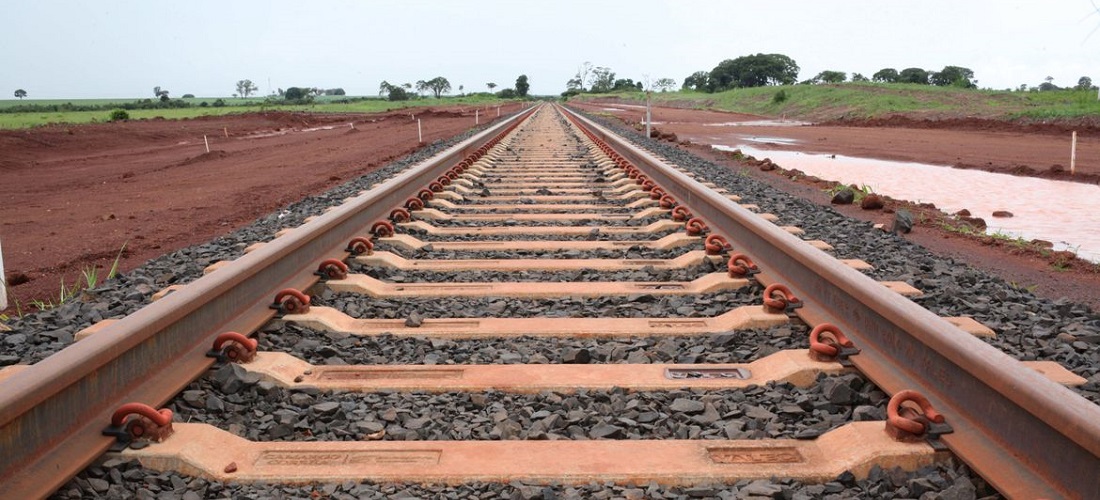
Brazil to focus investment in rail transport for the first time in decades
Oct, 25, 2020 Posted by Ruth HollardWeek 202044
According to Marcello Costa, the National Secretary for Land Transport at the Ministry of Infrastructure, rail transport in Brazil will once again become the focus of investments after decades of stagnation and will gain more priority in the distribution of inputs and goods within the national logistics model.
According to Costa, who has a doctorate in transport with an emphasis on logistics from the University of Brasília (UnB), the modes of transport need to reflect the geographical characteristics, dimensions, distances, and the types of cargo that are transported. “We produce a significant number of commodities – minerals or agriculture – transported over long distances, far from large ports. We have to adapt to the most competitive forms, such as the railroad modal” says the Secretary.
According to figures from the Ministry of Infrastructure, Brazil uses rail to transport only 15% of large volumes of goods and inputs in the country. Highways account for 65%. Marcello explains that for products with low added-value and high volume, rail transport is the most appropriate. The planning that the ministry follows aims to balance the transportation matrix, investing mainly in the modes that best adapt to the country, which in its opinion are the rail and waterways, including coastal shipping.
Logistics planning
The goals of transforming Brazilian logistics are broad and include long-term strategic measures, says Costa. These objectives are included in the National Logistics Planning (NLP), a document that aims to improve and optimize the way products enter and leave the states and arrive at the export routes at the ports.
The current NLP covers the period between 2018 and 2025 and foresees more than doubling the participation of the railway modal. “The goal is to increase the railroad’s share of Brazilian logistics to 31-32%,” says Costa.
According to the secretary, the Ministry of Infrastructure plans to deliver a review of NLP in 2021 that will provide revised scenarios up to the year 2035. Costa promised that the government will deliver the sector’s evolution goals by 2050 before the end of the current mandate. “The goals are consistent with railway planning. A railroad takes about a decade to complete and is operated for 20, 30 years. This planning horizon is reasonable”, he maintains.
The Ministry of Infrastructure works on two major fronts for boosting railway transport: recovery of stretches, with the improvement of old and low-performance roads, and construction of new modern and efficient railways.
“On the one hand, we need to increase the capacity of the existing network in these 29 thousand kilometers, mainly the 9 thousand non-operational ones. We need to re-potentiate and increase the capacity of the railway network, which is still from the last century. The average speed of cargo transportation by rail is around 23km/h, which demonstrates the first challenge to be overcome to increase efficiency ”, emphasizes Marcello Costa.
According to Costa, the ministry currently evaluates the advantages of renewing contracts for the five major Brazilian railways. Contracts for Rumo Malha Paulista – which feeds the Port of Santos – for the Carajás railway and the Vitória-Minas railroad have already been analyzed and renewed in advance. Rumo Malha Sul, MRS, and VLI – other major national railroads – are still being analyzed for the portfolio.
External investments
Historically, the inflow of private resources has largely boosted railway expansion in countries with large networks. Therefore, the participation of internal and external investors is essential for the advance of the Brazilian railway says the Secretary. “The Brazilian infrastructure is a great business opportunity. We have a lot of maturity in our concession contracts, which attracts even more investors. ”
What’s next
The goals created by the federal government for the development of the railway modal are ambitious. In addition to the National Logistics Plan until 2050, the Ministry of Infrastructure intends to finish all the early renovations of the current national railway network and to prepare and launch the railroad public auctions that are planned for the future.
Marcello Costa also mentions the influence of new technologies on the railway sector. The 5G technology, which arrived in Brazil this year, will be one of the crucial factors for operational optimization for cargo transportation. He says that the demand for efficiency and competitiveness in the sector will create space for the birth of national solutions that involve automation and digitalization of processes. “We have a partnership to implement a center of excellence for rail transport. Minister Tarcísio understood the need to facilitate and permit academic studies and research, testing of new equipment, training, and improvement courses for professionals.
-
Mar, 16, 2023
0
Innovations and oil industry growth expected ahead for Brazilian maritime market
-
Meat
Jun, 20, 2023
0
Company ordered to pay BRL 1.39 million for mistreatment of cattle
-
Ports and Terminals
Sep, 27, 2019
0
Port and railroad project in MA forecasts R$13bn of investments
-
Meat
Jul, 19, 2022
0
Brazil’s daily average of beef exports up 7.6% in July


